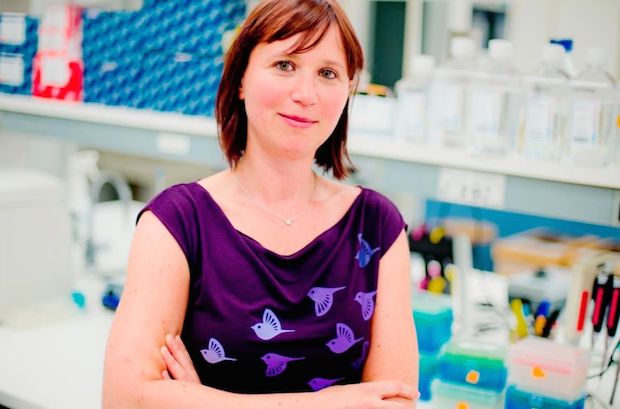What is a genome? Few of us would be able to answer that question. In short, a genome is all of a living thing’s genetic material. It is the entire set of hereditary instructions for building, running, and maintaining an organism, and passing life on to the next generation. The genome is divided into chromosomes, chromosomes contain genes, and genes are made of DNA.
Each one of earth’s species has its own distinctive genome, and each individual in that species has its own unique genome. Unless you are an identical twin, your genome is different from that of every other person on earth, even different from that of every other person who has ever lived.
When you know these facts, it becomes obvious why scientists would study the human genome – discovering how it functions may unlock cures for diseases. We also benefit from studying the genomes of related species such as apes, and in particular the gibbon. On the evolutionary scale, gibbons are very close to humans.
“Gibbons are the link between old world apes and the great apes,” Dr. Lucia Carbone explains.
Gibbons have a remarkable genome. The species has experienced an accelerated rate of evolutionary chromosomal rearrangement, what Dr. Carbone describes as “chromosomal earthquakes.”
“I like to describe the genome as a landscape with mountains,” Carbone explains. “Chromosomal rearrangements are like earthquakes – one event will completely shape the landscape.” Understanding this phenomenon could lead to understanding the changes that cause healthy cells to become diseased cells.
Growing up in Bari, Italy, Lucia Carbone was surrounded by science. Her mother is a physicist and her father is a chemist. From the time she was 9, Carbone knew she wanted to study genetics. Encouraged by her family and a mentor, she received her M.S. in Biology in 2001 and her Ph.D. in Genetics and Molecular Evolution in 2004 from the University of Bari. After coming to the States in 2005, she was a Postdoctoral Fellow and Assistant Staff Scientist at the Children’s Hospital Oakland Research Institute. Her postdoctoral research focused on evolution in the gibbon species.
Carbone came to Oregon Health & Science University in 2010, where she continued her work in sequencing the White-cheeked gibbon’s genome. In the Carbone Lab, she and her team used blood samples taken from gibbons during routine check-ups at the Gibbon Conservation Center in California.
In September 2014, the Lab’s successful results were published in Nature, a weekly international interdisciplinary science journal.
Now Carbone’s focus is using the sequencing knowledge to study cancer. Recently, a tumor was removed from a gibbon’s foot at the Conservation Center and sent to Carbone for analysis.
“Ricky is a beautiful gibbon that developed an aggressive and malignant sarcoma on her foot,” explains Carbone. “Tumors in non-human primates are extremely rare; now we had the chance to analyze one in detail and learn from it. With our study we hoped to learn more about the genetic basis of sarcoma in order to help her and human patients.”
With the help of pathologists at OHSU, Ricky’s sarcoma was identified as a Malignant Peripheral Nerve Sheath Tumor. Thanks to generous funding from the NW Sarcoma Foundation, the Carbone Lab is now in the process of sequencing the DNA and RNA of the tumor and hope to learn as much as possible about it. Insights gleaned from identifying the tumor’s genetic makeup could be used to understand the mechanism of chromosomal rearrangement in cancer, and be used in combination with studies on cancer patients.
Gibbons are a critically endangered species; their natural habitat is being destroyed at the alarming rate of 32 acres per minute and poaching also decimates their population. Two of the 19 species of gibbons are especially endangered: the Eastern black gibbon is one of the rarest primates in the wild, and the Hainan gibbon is the rarest mammal in the world.
Conservators at the Gibbon Conservation Center are using the information from Carbone’s study to better care for gibbons, to help in captive breeding programs, and to assist with gibbon rescue programs around the world.
Carbone has a special attachment to the Conservation Center. She knew the founder, Alan Richard Mootnick, and a white-cheeked gibbon at the Center has been named for Carbone. “Her name is Lucia and she doesn’t have a very good temperament,” laughs Carbone. “The keepers tell me she is very hard to work with.”
“Gibbons are such special animals. When I presented at a seminar in Hanoi, Vietnam, I learned that 2015 is the year of the Gibbon.”
Carbone continues to educate others about the significant gibbon genome sequencing results. She is presenting a Biology Department Seminar at Reed College in Portland on February 6th entitled, “LAVA Flow and Genomic Earthquakes: The Gibbon Has It All!”
To learn more, visit www.carbonelab.com and www.gibboncenter.org




























